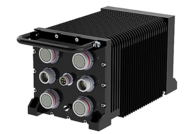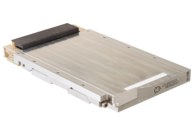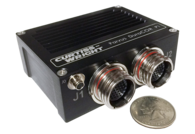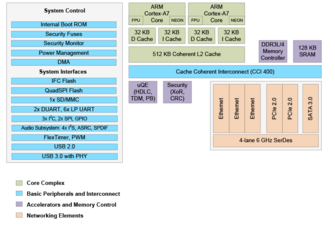
Unparalleled Power-to-Performance Ratio, Low Power, and High-Integrity Secure Computing
Today’s rugged embedded applications put incredibly high demands on the components that drive them. The innovative Arm architecture enables processors to meet this challenging set of performance and size, weight and power (SWaP) requirements. Arm technology is based on reduced instruction set computing (RISC), a simplified instruction set architecture that requires fewer microprocessor cycles per instruction and fewer transistors than processors that are based on complex instruction set computing (CISC). Due to the way that Arm implements the instruction set, Arm-based processors can deliver a combination of capabilities that CISC-based processors, and even other RISC-based processors, cannot match.
Is Arm the Future for Airborne Platforms in Military and Aerospace?
In this white paper, we look at whether Arm’s commercial success can translate to defense and aerospace markets in order to meet the highest DO-254 requirements and fill the Power Architecture void. Read the “Is Arm the Future for Airborne Platforms in Military and Aerospace?” to learn more about:
- Arm processors
- DO-254 safety certification
- NXP Arm cores
- Arm technology in automotive and aerospace applications
Arm processors are available from multiple manufacturers, including NXP, NVIDIA, Xilinx and Texas Instruments. Curtiss-Wright works closely with technology partners to select specific products employing Arm cores and offering long life availability, such as the processors in NXP’s Layerscape series that typically enjoy a lifecycle of over 15 years from product launch. Each Arm processor is carefully chosen to meet the high reliability requirements that Curtiss-Wright products demand for the long-term success of your programs. As an industry leader in rugged embedded, defense, and aerospace computing, Curtiss-Wright has put the benefits of Arm technology to work, using this high-performance processor architecture to deliver a number of firsts for the industry.
The Curtiss-Wright Advantage
Our complete line of NXP-based COTS modules is engineered for rugged deployed SWaP-constrained platforms.
- Architecting the Complete COTS System Solution: we support a wide variety of operating systems on our boards, complete with module drivers and middleware, designed to enable quick development
- Pin-compatibility: we invest to enable technology insertion from generation to generation to offer you the latest technology with minimal risk
- Modified COTS: we can take our COTS products and modify them to meet the needs of a particular program, saving you time and money while reducing your program risk
- Safety and Security: we have a broad selection of COTS modules and systems designed to DO-254 and DO-178 standards and offering security features such as Arm Trustzone® and NXP Secure Boot and Trust Architecture
Arm Cortex Processor Technology
Arm has created a variety of microprocessor designs, each with varying performance and power levels. Arm then licenses its technology to over 1000 industry-leading companies who use the technology to create silicon and other development tools. Together with a large software ecosystem and multiple vendor support, Arm's cutting-edge processors are built to suit the needs of almost all industries and markets. This white paper focuses on three Arm-based cores - the A7, A53, and A57 - and their benefits to embedded computing.

 Learn More
Learn More
 Learn More
Learn More
 Learn More
Learn More
 Learn More
Learn More
